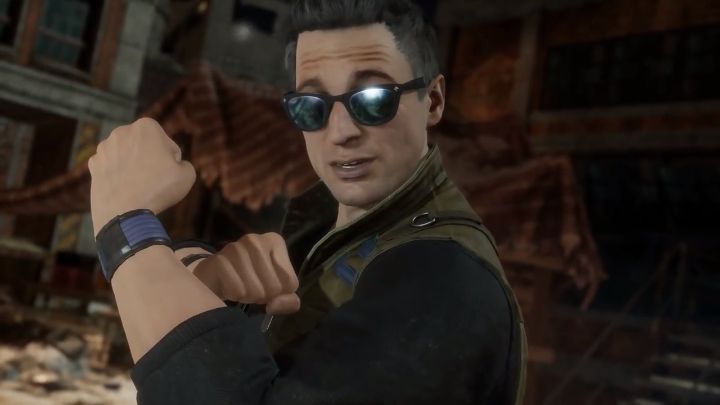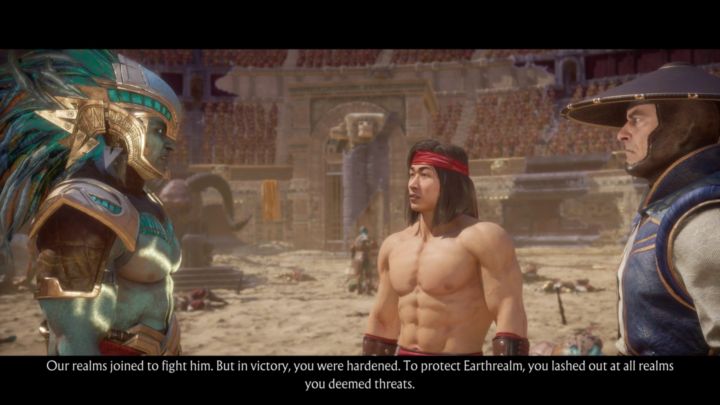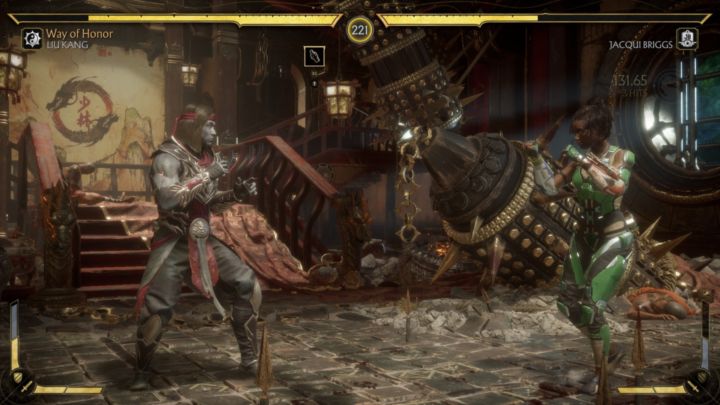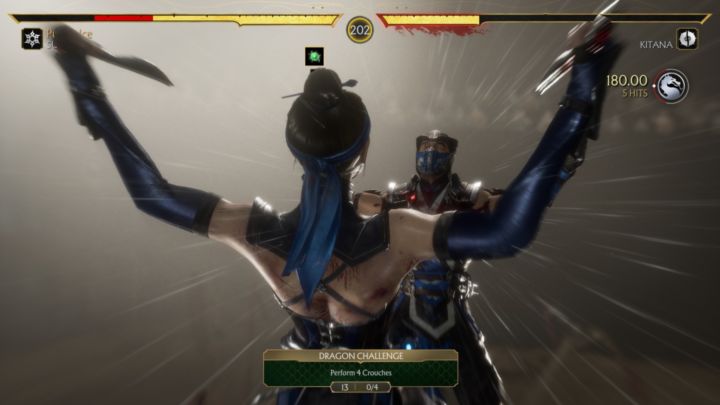The Mortal Kombat games have offered some of the best fighting action on consoles and PC since the early 90’s, so it makes sense that plenty were excited when Warner Bros. announced that a new entry in the series would be hitting shelves in 2019.
And Mortal Kombat 11 sure is a worthy addition to the franchise, boasting exciting fights, a good story and plenty of game modes for you to enjoy, making it one of the best games in the series to date.
If you’ve played the earlier Mortal Kombat games, you can imagine that Mortal Kombat 11’s story involves time travel in some capacity – and it does. Thunder God Raiden’s vicious treatment of Shinnok (the villain in the previous game in the series) has given rise to Kronika, who is the new villainess in this new Mortal Kombat game. This lady has the capacity to manipulate time, and is looking to erase her rivals – like Raiden – from time altogether.
Kronika’s messing up of time has an interesting side effect, though, as the good guys from Earthrealm (Liu Kang, Johnny Cage, Sonya Blade and so on) are brought back from the past, and get to work with their present selves in order to stop Kronika and her lackeys, which include time warrior Geras and Kollector, a guy with several arms who is one of the new characters in the game. Also returning from Mortal Kombat X are the insect-like D’Vorah and Kotal Kahn, the guy who succeeded Shao Kahn as ruler of Outworld in the earlier Mortal Kombat game.
Sadly, though, the bald and blue-eyed Kronika is not such a great character, so it’s a good thing that her time-warping antics bring back Shao Kahn too, who’s a far more interesting enemy to deal with as he was in earlier Mortal Kombat games. I also enjoyed seeing characters like Johnny Cage interacting with their past selves. The present Johnny seems to despise his earlier, movie star self, while his past self is fascinated by the fact that he’ll get to hook up with Sonya Blade in the future, and have a daughter (the present day Cassie Cage) – who also gets to work with her mother from the past to put an end to Kronika’s plans.
This is definitely some of the most original storytelling seem in a video game to date, and even though I found the time-rewinding concept a bit cheesy at first, having two versions of several characters (past and present) in the story works wonders here, leading to many funny moments and reflections about the series’ past and future.
The game’s story mode boasts incredible production values – this surely ups the ante from 2011’s Mortal Kombat, which was the first game in the series to offer a cinematic storyline. And this is still leagues ahead of other fighting games to offer a similar story mode, such as Street Fighter V. Actually, at times I felt like I was watching a movie, interrupted every now and then by interactive bits. These bits as you can imagine are Mortal Kombat’s classic 2D fights, plus NetherRealm Studios also lets you choose between two characters in certain fights as it did in its highly acclaimed Injustice 2 game.
A criticism that was levied at the Mortal Kombat games in the past was the inability to replay a specific portion of the story mode, as you had to restart in order to enjoy your favourite bits of the story. Not so here, as you can go back and replay any of the story chapters as you see fit, and even choose to play specific fights within the chapter, which surely is a boon.
This will let you go back and replay your favourite scenes and fights in story mode, even if the single player story mode doesn’t have much replay value overall. There are some great scenes in it though, such as one taking place in a fight club where you play as iconic Mortal Kombat character Sonya Blade, and another set in a colossal arena where you play as Kotal Kahn and get to face the series’ arch-villain Shao Kahn.
But no matter how good and watchable Mortal Kombat 11’s cinematics and story are, it’s the fighting action that makes or breaks a game like this. So it’s a good thing that Mortal Kombat’s gameplay is as good as ever, with the fast-paced, ball-breaking action really shining here.
As in the earlier games, the goal in any fight is to knock out your opponent, thereby winning the round. Being the best of three rounds means you win the match. As in any fighting game you do this by resorting to basic moves like punching and kicking. You can also pull off flashier, special moves by hitting more than one gamepad button at once, and also combos. Chaining standard moves and specials in quick succession can land many blows on a helpless opponent as in the earlier Mortal Kombat games, which is especially satisfying, although you have to be wary as opponents can also block your combo and launch a quick counterattack.
And then there are the new “Fatal Blow” moves. Fatal Blows are new super combos, which become available during the match after you’ve taken enough hits from an opponent. These can help reverse the course of a match, as landing a Fatal Blow takes off a substantial part of your opponent’s health bar. You’re also treated to a cutscene showing your character dishing damage to your opponent. This is all gruesomely violent as you can imagine – stabbing of eyes, stomping of faces and shooting in the neck are some of the niceties seen here – as befits a Mortal Kombat game.
Fatal Blows can be performed once per match, but can get repetitive when you’re fighting the same character you’re playing as (which does happen a few times during the game’s story mode), as you might have to watch the same exact moves twice if both characters get to perform their Fatal Blow in the match.
Of course, Fatal Blow moves, no matter how violent they are, still don’t compare to the series infamous Fatalities. These are back in Mortal Kombat 11, and are definitely not fit for the squeamish, and might actually make some people run for the hills. For instance, Baraka’s Fatality involves him tearing his opponent’s face off, after this he proceeds to munch on the poor victim’s brain… Other Fatalities such as Kitana’s involve eviscerating his opponent, with her floating in the air amidst a shower of blood and guts.
Mortal Kombat was controversial back in the 90’s due to the game’s Fatality moves, and long-time fans of the series (and sadists too) will surely be pleased that NetherRealm Studios hasn’t toned these down one bit in Mortal Kombat 11.
An issue with Fatalities is that I could not get to perform these using the simplified input sequence seen in the game’s menu, but thankfully the game’s tutorial explains how to perform these using a longer sequence of commands.
The different tutorials also show how to perform basic moves like throws and blocks, and basic special moves. Plus, you’re also introduced to the finer points of fighting and learn how to perform elaborate combos, how to cancel one move into another and even stuff fit for very advanced players such as how many frames of animation a move takes to perform – handy if you ever graduate to pro status. Also handy is the fact that you can watch an example of the move or moves you’re about to perform, with the required controller inputs being shown onscreen, something which had been missing in earlier entries and is a welcome addition to Mortal Kombat 11.
The elaborate tutorials also highlight the fact that this is a fighting game with a lot of depth, although a very fast paced one – Mortal Kombat 11 might not be your cup of tea if you don’t have that need for speed. Despite this, the game’s default difficulty is not particularly challenging, especially in story mode, as I did not need to attempt each fight more than a couple of times to get through, with rival fighters giving me enough time to react and try different moves throughout the match.
And after playing for a while I found normal difficulty to be something of a cakewalk, while hard difficulty offers a much healthier challenge. Actually, hard difficulty is considerably harder than normal – it takes much more effort to win fights (spamming of moves and specials won’t help here), making me wish there was an in-between difficulty available. At least hard difficulty serves as training for the game’s multiplayer matches, which let you test your skills against real-life human opponents.
The multiplayer modes will be familiar to those who have been playing the Mortal Kombat games over the years. There’s the typical 1 vs 1 match (either local or online), King of the Hill, plus also a mode in which you can pit your customized AI characters vs another player’s, both getting to watch their combatants duke it out until one prevails. You can also attempt to best a human opponent across several matches, with the first to win 3 matches being crowned the victor.
Meanwhile, King of the Hill plays out as in the earlier Mortal Kombat games: players wait in line to take on the “king of the hill”, who remains so until another player defeats him and takes his or her place, while those in line can watch others take on the current king of the hill, giving a “respect” score at the end of matches and also showing their approval or disapproval with the fighting action via emotes – a nice touch.
An issue with this gameplay mode is that I encountered some lag while watching fights – nothing significant, but enough to slightly impair my enjoyment of other players’ matches. Strangely enough, lag was almost non-existent while duelling other players. And playing human opponents in multiplayer sure is more challenging than facing computer opponents – expect a serious drubbing if you’re struggling with the game’s normal difficulty.
Thankfully, Mortal Kombat 11 offers enough single player game modes with which to hone your skills with if you’re not ready to dive into multiplayer just yet. Aside from story mode and tutorials, there are also Mortal Kombat’s towers to play through. Mortal Kombat 11’s classic towers pit you against a series of opponents in standard matches, with Kronika sitting at the top, whom as you can imagine is the final boss. Thankfully, Kronika is not as cheap as a fighter as Shao Kahn was in 2011’s Mortal Kombat, and doesn’t resort to cheap tricks to gain an edge as Shao Kahn did in that game, even if she’s hard enough to take down, especially if you up the difficulty to hard. She can also pull off that old Shang Tsung trick of turning into other characters (and incidentally Shang Tsung is one of the game’s upcoming DLC characters).
Aside from the classic towers, there are also the new “Towers of Time”, a variation on the classic towers. These introduce variations such as a set difficulty level, only letting you play as a certain character, time limits, and are more challenging overall than the classic towers. You can also make use of special consumables in tower matches, which can help you gain an edge in difficult fights. These allow you to summon another character to help during the match, fire projectiles at your opponents, and some consumables even shield you from damage when used. Consumables help liven up the gameplay, and surely are a nice addition to the game.
You can pick any of the game’s characters (except Kronika) to play the game’s towers and other modes. The game’s story mode makes you play as specific characters throughout, even if sometimes you have a choice between two characters before a fight, which is cool. There are two dozen fighters available here, including Mortal Kombat stalwarts like Kitana, Liu Kang and Baraka, plus newcomers like the aforementioned Geras and Kollector too.
It’s a pity though, that Shao Kahn is only available as a DLC character – meaning you have to part with extra cash if you want to play as Kahn, even if he still appears in the game’s story mode. Mortal Kombat’s arch-baddie should have been part of the standard package.
Also, the game’s audio did sound slightly muffled compared to other games on our test PC, forcing me to raise the volume higher than normal. This doesn’t seem to play ball with my airmouse either, forcing me to disable it in order to play the game – something of concern if you use one of these pointing devices with your PC. And the default graphics configuration seems to prioritize resolution over graphical detail, while I preferred to settle for a lower resolution and more eye candy, although you may have a different preference in this regard.
There seem to be a few issues with the game’s servers too. My connection to the servers was cut while playing through a tower, thereby losing all my progress – extremely annoying. Warner Bros. and NetherRealm Studios really need to solve these issues now.
None of this matters in the end, though, because Mortal Kombat’s visceral action, thrilling fights and Hollywood-calibre story win the day in the end. Also, the way characters’ pre-match banter references events taking place in Mortal Kombat 11’s story and earlier games is a nice touch. If you’re a Mortal Kombat fan or are looking to dive into the series for the first time then this is definitely the game to get, then, as Mortal Kombat 11 surely is one of the best fighting games to come out in years.
Mortal Kombat 11
Score: 86 / 100
Available on: PS4 | Xbox One | PC | Nintendo Switch
Reviewed on: PC (System: Intel Core i5-8400, 16 GB of RAM, Nvidia GTX 970, SSD Drive)
Publisher: Warner Bros.
Launch date: April 23, 2019
This game was reviewed using a copy purchased for the purpose of this review.





